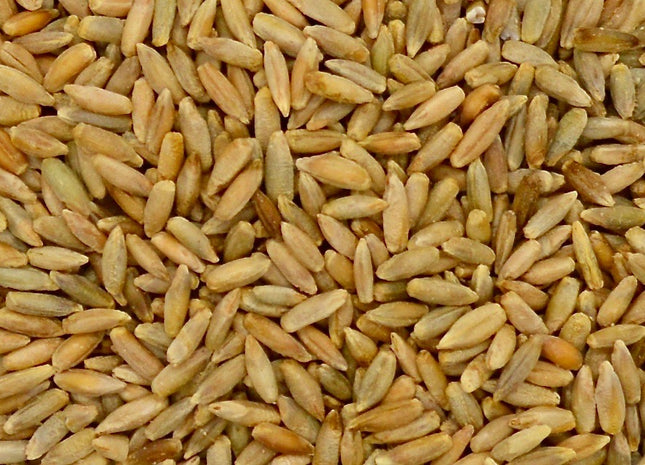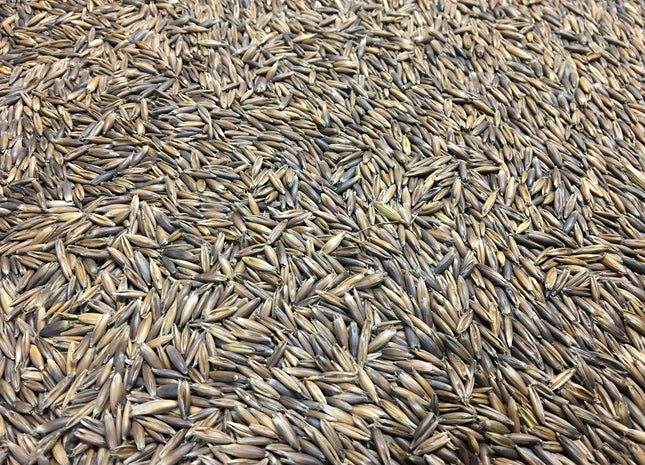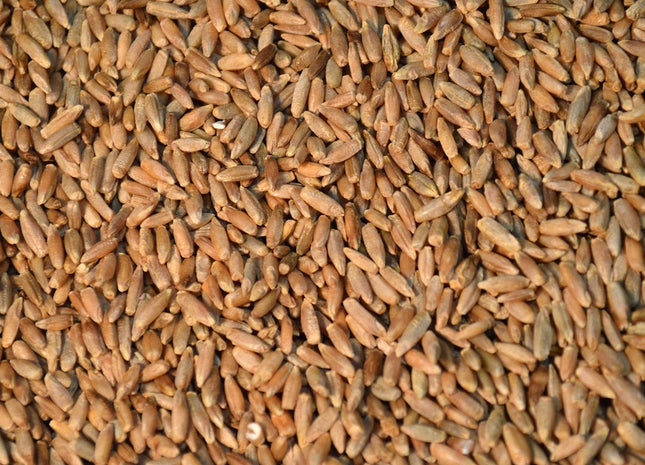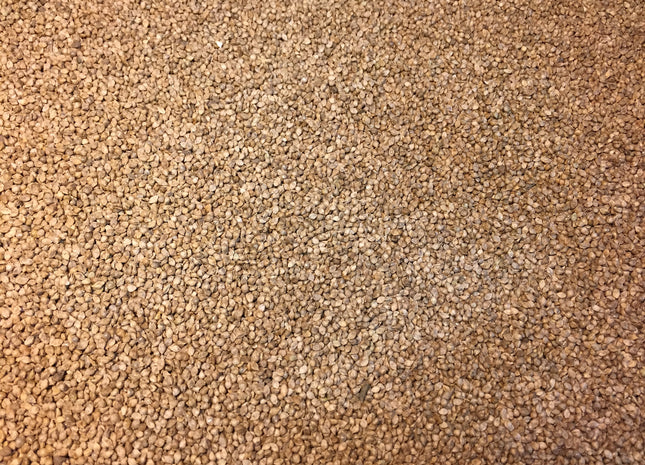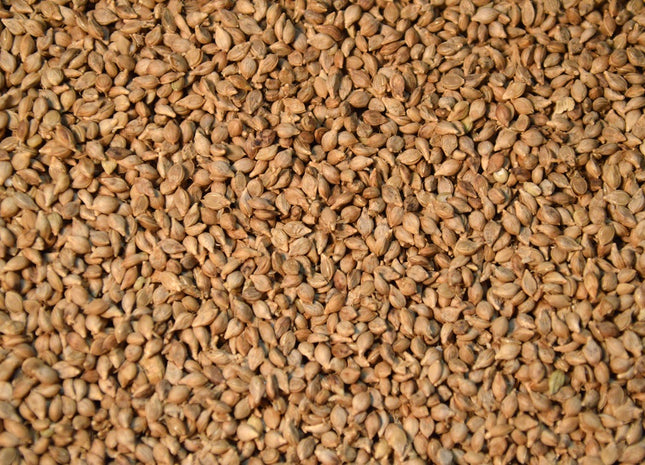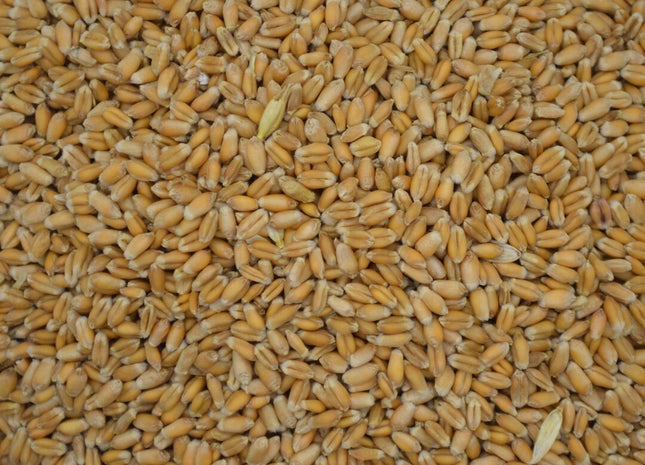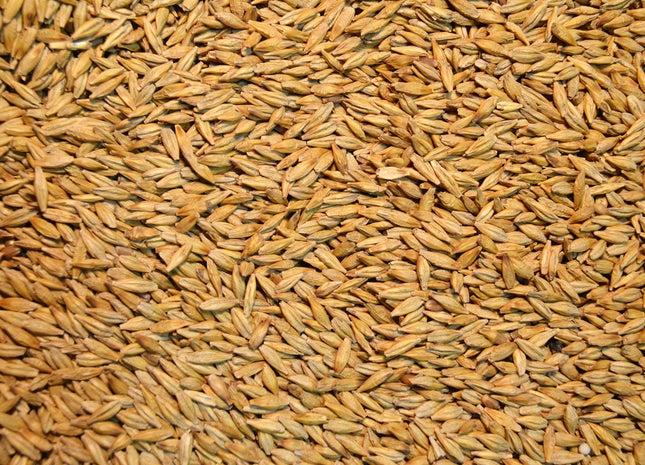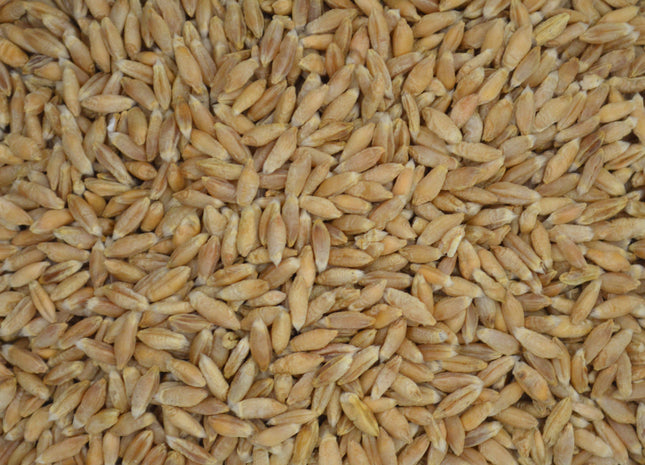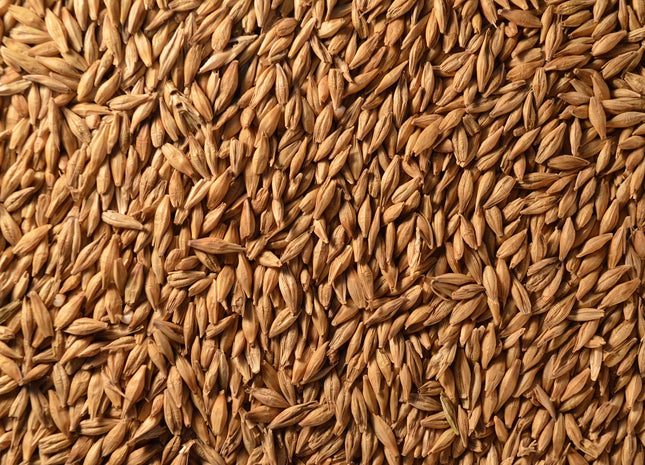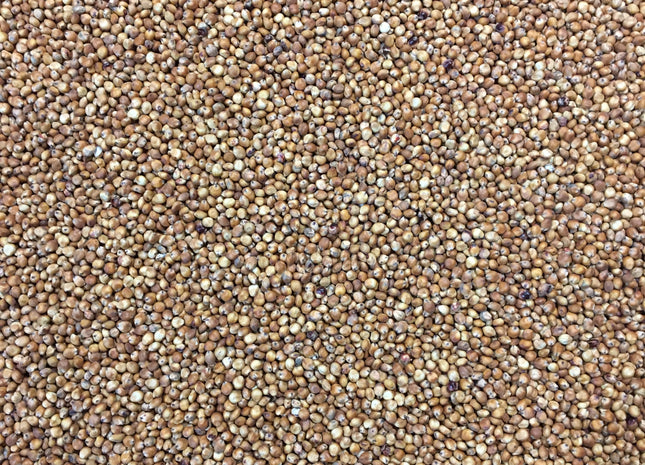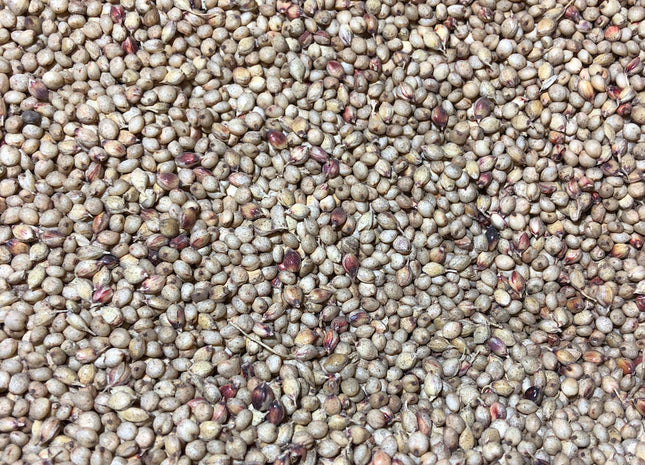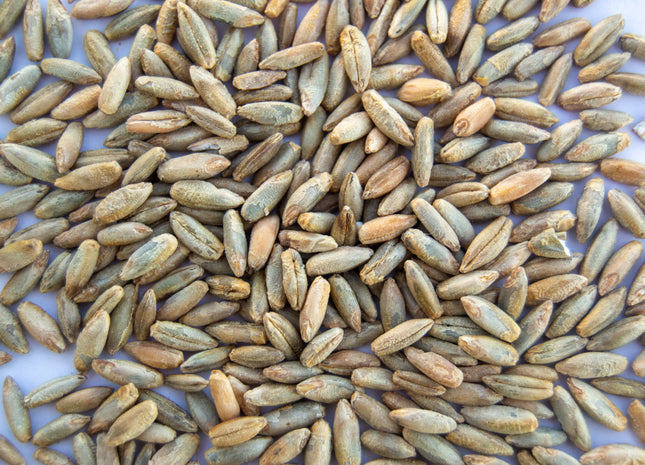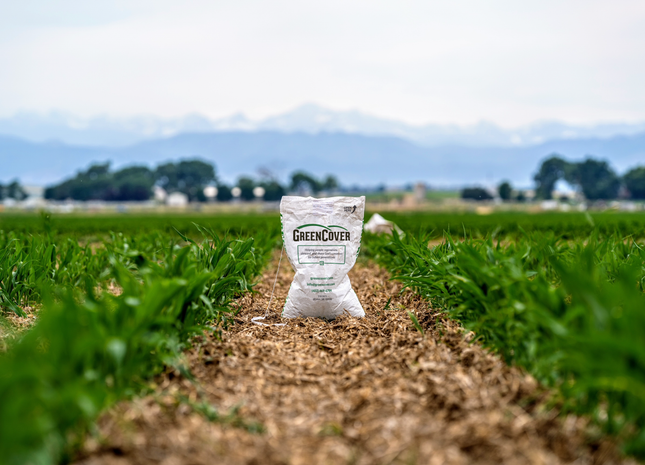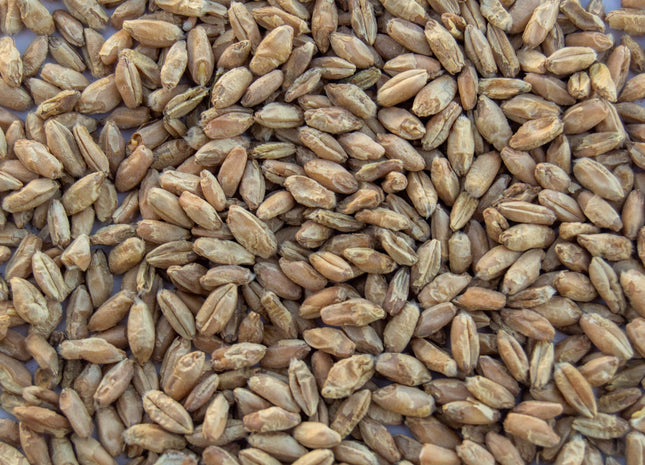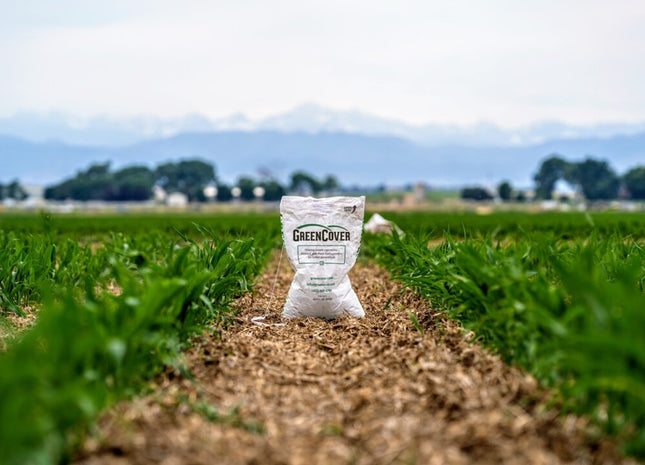Grasses

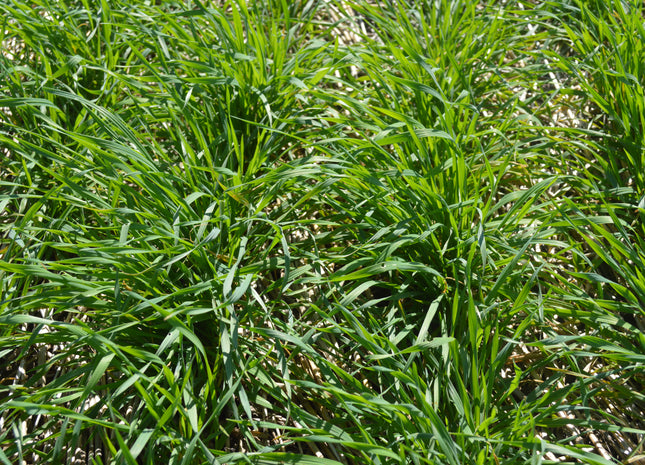
Cereal Rye (Elbon)
Cereal Rye has an excellent fibrous root system that alleviates surface compaction. Rye can be successful planted later then almost any other cover crop due to its low germination and growth temperature requirements. Cereal rye is known for being the best cereal crop at retaining residual N. It's typical for a fall planted cereal rye crop to scavenge on average 25 to 50 lbs of N, with cases scavenging in excess of 100 lbs of N. The vigorous spring growth has successful weed suppression through competition and allelopathic chemicals. Rye can be terminated in the spring through the alternative methods of rolling, mowing, or crimping after boot stage. Rye will out yield any other cereal crops when planted in droughty, infertile, or sandy soils.
from $0.24 per lb

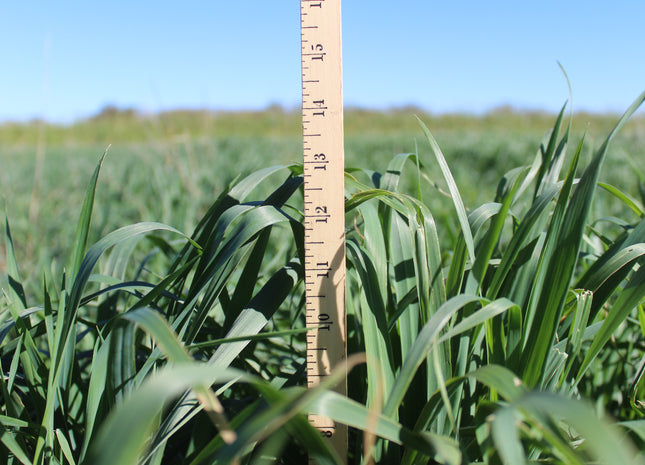
Black Oats (Cosaque)
Cosaque black oats offer several advantages over traditional oats, including superior nutritional value, digestibility, palatability, and a robust tillering capacity. They exhibit forage yields comparable to cereal rye and demonstrate good winter hardiness, often serving as a winter annual crop in southern regions. Notably, these oats thrive even in low-quality soils, contributing to soil restoration and enrichment due to their exceptional root system. A great fall grazing option across the U.S. and a great overwintering grass as you get south of Interstate-70.
from $0.32 per lb

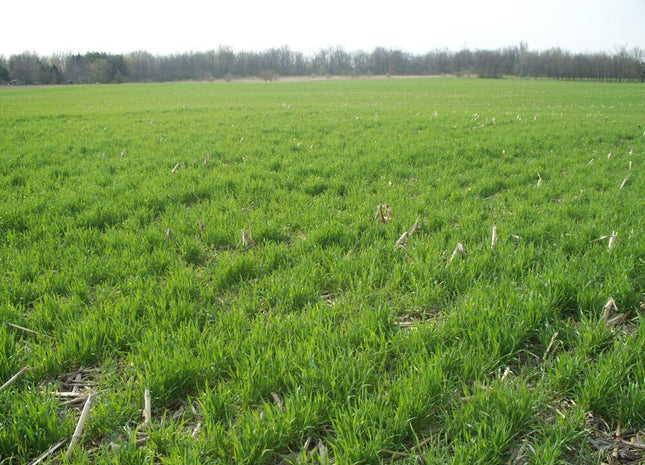
Cereal Rye (Hazlet)
Cereal Rye has an excellent fibrous root system that alleviates surface compaction. Rye can be successful planted later then almost any other cover crop due to its low germination and growth temperature requirements. Cereal rye is known for being the best cereal crop at retaining residual N. It's typical for a fall planted cereal rye crop to scavenge on average 25 to 50 lbs of N, with cases scavenging in excess of 100 lbs of N. The vigorous spring growth has successful weed suppression through competition and allelopathic chemicals. Rye can be terminated in the spring through the alternative methods of rolling, mowing, or crimping after boot stage. Rye will out yield any other cereal crops when planted in droughty, infertile, or sandy soils.
from $0.24 per lb

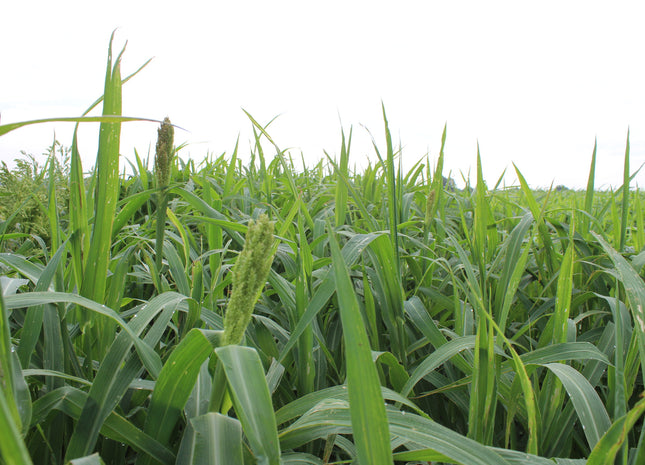
Japanese Millet
Japanese millet, known for its quick maturity, usually offers a lower forage yield compared to other millet varieties. However, it stands out for its superior post-maturity palatability when compared to foxtail millet and its impressive regrowth capabilities. Additionally, Japanese millet exhibits remarkable resilience to waterlogged soils, thriving even in standing water, making it a valuable choice for enhancing duck habitat and nourishment in food plots.
from $0.90 per lb

Brown Top Millet
With extremely rapid growth, browntop millet can fill narrow growing windows to produce a nice quality forage. Under ideal conditions seed will germination within 5 days and forage or seed will be ready to harvest within two months time. Very fine stems and leaves allows plant material to dry down effectively for dry hay production. Browntop millet is an effective nurse crop, much like oats, in stabilizing erosive hill slopes and providing cover for slower growing target species to become established. Research has shown browntop helps to suppress root-knot nematode within the soil. This species is very inexpensive, providing a full stand for less than $15 an acre. With the ability to easily reseed and that seed to remain viable in the soil profile for years, makes browntop millet an excellent regenerating food plot for wildlife.
from $1.10 per lb

Winter Wheat (GA Gore Soft Red) - Beardless
The soft red winter wheat, an awnless variety, stands at a medium height with its moderate-strength straw. Its resistance to diseases and pests makes it a nice option as a winter cover crop for grazing, weed suppression, and erosion control.
from $0.27 per lb

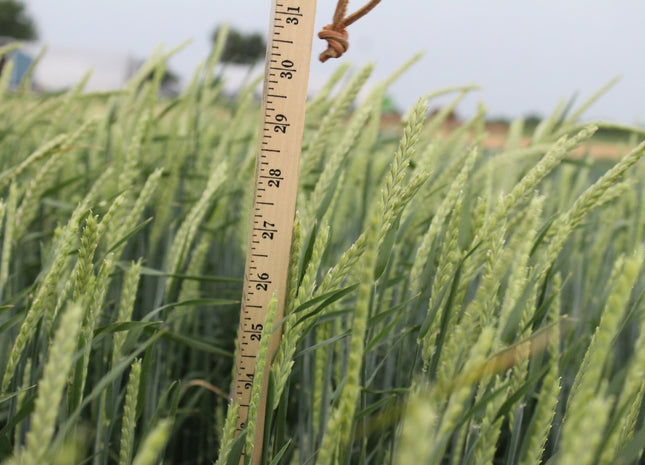
Spring Forage Barley (Lavina) - Beardless
Barley has relatively low water usage compared to other cover crop species, especially during earlier growth stages. Under poor fertility conditions, barley would be a good choice and can help render P & K available for your next crop. Barley provides a good feed quality grain that can be harvested 2-3 weeks earlier than wheat which then allows your double crop/cover to be planted sooner.
from $0.32 per lb

Triticale (SY TF 813 Triticale) - PVP
This product cannot be shipped to AZ or CA. 813 is a winter triticale variety adapted to the Southern and Central Great Plains. This triticale is awnletted meaning it has very short beards. 813 is a medium maturity, rust and wheat streak mosaic tolerant variety. It should be used for forage production and is known for excellent silage yields.
from $0.32 per lb

Winter Barley (P919) - Beardless
Barley has relatively low water usage compared to other cover crop species, especially during earlier growth stages. Under poor fertility conditions, barley would be a good choice and can help render P & K available for your next crop. Barley provides a good feed-quality grain that can be harvested 2-3 weeks earlier than wheat, which then allows your double crop/cover to be planted sooner. Compared to oats, barley produces more tillers and vegetation that will remain erect longer after termination. Carbohydrates known as monosaccharides are excreted through the roots to feed soil biology and barley has been observed to release more monosaccharides than even alfalfa.
from $0.32 per lb

Sorghum Sudan (SolarMaxx PPS)
SolarMaxx is a photoperiod sensitive sorghum sudangrass designed to be used in both diverse cover crop mixes as well as for forage production. The photoperiod sensitivity is an increased benefit to anyone who wants to have a full season plant with multi harvest possibilities. Photoperiod sensitivity means that the plant will not go reproductive until the daytime hours get to 12 hours and 20 minutes. The flexibility of these genetics gives the producer time to either react to making a harvest, or allow time for moisture to come and allow the plant to grow again. Since seedhead emergence is so late the threat of volunteer seed is little to none.
from $1.45 per lb

Forage Sorghum (Sweet Cane Max MS)
Sweet Cane Max is a medium maturity, male sterile, forage sorghum. This hybrid fits well in high-quality forage production or grazing operations. It has superior standability when compared to other hybrids. Sweet Cane should be used in single cutting/grazing or winter grazing scenarios. When drying conditions are favorable it can be used for hay. Usually it is cut once the plant has headed out for highest sugar content or used for winter stockpile grazing. Sweet Cane will not produce grain unless pollinated with other sorghums, so isolation is recommended to protect sterility.
from $1.10 per lb

Organic Cereal Rye (Cardinal)
Notice: This product may NOT be used for grain production, seed production, or mechanically harvested forage. Cereal Rye has an excellent fibrous root system that alleviates surface compaction. Rye can be successful planted later then almost any other cover crop due to its low germination and growth temperature requirements. Cereal rye is known for being the best cereal crop at retaining residual N. It's typical for a fall planted cereal rye crop to scavenge on average 25 to 50 lbs of N, with cases scavenging in excess of 100 lbs of N. The vigorous spring growth has successful weed suppression through competition and allelopathic chemicals. Rye can be terminated in the spring through the alternative methods of rolling, mowing, or crimping after boot stage. Rye will out yield any other cereal crops when planted in droughty, infertile, or sandy soils.
from $0.36 per lb

Cereal Rye (Cardinal)
Notice: This product may NOT be used for grain production, seed production, or mechanically harvested forage. Rye has an excellent fibrous root system that alleviates surface compaction. Rye can be successful planted later then almost any other cover crop due to its low germination and growth temperature requirements. Cereal rye is known for being the best cereal crop at retaining residual N. It's typical for a fall planted cereal rye crop to scavenge on average 25 to 50 lbs of N, with cases scavenging in excess of 100 lbs of N. The vigorous spring growth has successful weed suppression through competition and allelopathic chemicals. Rye can be terminated in the spring through the alternative methods of rolling, mowing, or crimping after boot stage. Rye will out yield any other cereal crops when planted in droughty, infertile, or sandy soils.
from $0.24 per lb

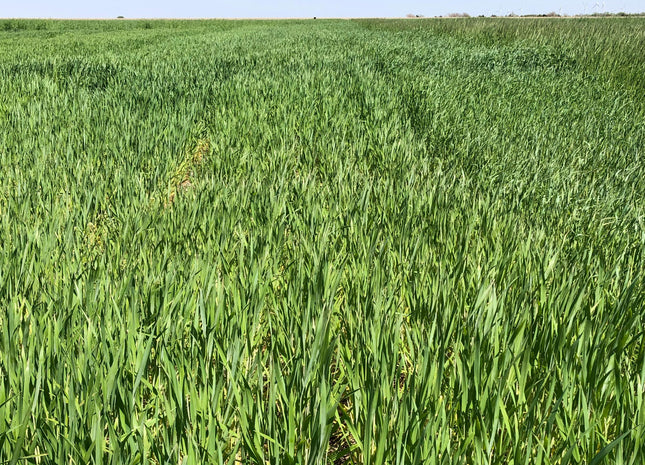
Triticale (Forage FX 1001 Triticale) - PVP
Forage FX 1001 Triticale is a beardless, high-yielding forage triticale which can produce great tonnage on dryland acres. Forage FX 1001 is also the most cold tolerant triticale we offer. The reduced awn expression makes this variety an excellent option for grazing or haying. With excellent forage yield potentials this variety gives you the tonnage and the quality you are looking for. Forage FX 1001 is known to produce high amounts of forage even in low rainfall environments such as the western Great Plains regions.
from $0.32 per lb
- Out of Stock


Organic Elbon Cereal Rye
Note: This product is certified organic. Cereal Rye has an excellent fibrous root system that alleviates surface compaction. Rye can be successful planted later then almost any other cover crop due to its low germination and growth temperature requirements. Cereal rye is known for being the best cereal crop at retaining residual N. It's typical for a fall planted cereal rye crop to scavenge on average 25 to 50 lbs of N, with cases scavenging in excess of 100 lbs of N. The vigorous spring growth has successful weed suppression through competition and allelopathic chemicals. Rye can be terminated in the spring through the alternative methods of rolling, mowing, or crimping after boot stage. Rye will out yield any other cereal crops when planted in droughty, infertile, or sandy soils.
from $0.37 per lb
- Out of Stock


Organic Hazlet Cereal Rye
Note: This product is certified organic. Cereal Rye has an excellent fibrous root system that alleviates surface compaction. Rye can be successful planted later then almost any other cover crop due to its low germination and growth temperature requirements. Cereal rye is known for being the best cereal crop at retaining residual N. It's typical for a fall planted cereal rye crop to scavenge on average 25 to 50 lbs of N, with cases scavenging in excess of 100 lbs of N. The vigorous spring growth has successful weed suppression through competition and allelopathic chemicals. Rye can be terminated in the spring through the alternative methods of rolling, mowing, or crimping after boot stage. Rye will out yield any other cereal crops when planted in droughty, infertile, or sandy soils.
from $0.36 per lb

Forage Sorghum (Sorgrow D120 BMR Brachytic Dwarf)
This Brachytic Dwarf Forage Sorghum brings a jump in yield potential. Excellent standability, top-notch quality feed and now featuring our Aphix SCA tolerance. This is a benchmark of all high-yielding forage sorghum products in the lineup. If you need a product to push the limits of yield and provide superb agronomics, this is the one to try.
from $2.30 per lb

